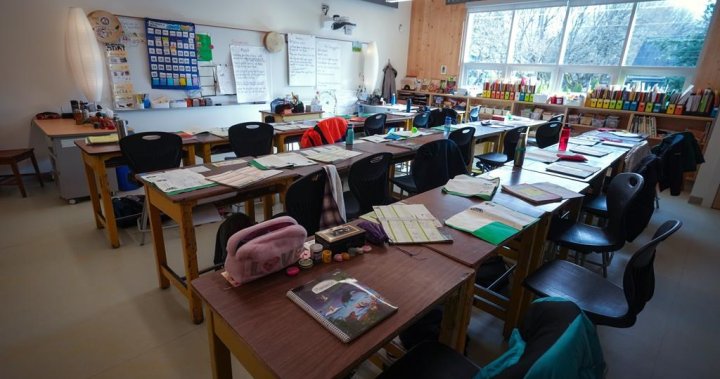
Student violence on teachers is a growing concern. What can be done?
Global News
With mounting concerns over cases of violence and abuse, union leaders and teachers say there are multiple issues that need to be addressed.
Even as Canada’s teacher shortage continues to impact schools across the country, educators and those that represent them say one of the factors causing departures from the profession is the abuse or violence some face in classrooms.
The numbers vary from province to territory, as does the severity of the incidents reported. The broader trend, according to education professionals, is growing fear and exhaustion.
“They’re just tired of being sworn at and threatened, even if it’s not a real threat,” said Ted Hupé, president of the Yukon Association of Education Professionals. “When you have a primary child lashing out in that way, people tire of it and they choose not to be part of that.”
Saskatchewan Teachers’ Federation president Samantha Becotte told Global News that a survey of their members showed about 30 per cent having experienced violence or abuse in the last five years with the types of abuse varying from physical harm to substances being dropped into teachers’ beverages.
“We’ve heard instances of things being dropped into a teacher’s drink or their coffee, which isn’t physical violence, but obviously is significantly harmful to teachers and can be potentially very dangerous,” she said. “We’ve heard about broken bones, we’ve heard about black eyes and bloody noses that have been a result of this violence.”
With mounting concerns of such cases, union leaders and teachers say there are multiple issues at hand that need to be addressed.
Ontario Secondary School Teachers’ Federation president Karen Littlewood said among the issues faced is not enough support staff — such as child and youth workers or psychologists.
This is leaving teachers having to act as more than just teachers, she says.





















 Run 3 Space | Play Space Running Game
Run 3 Space | Play Space Running Game Traffic Jam 3D | Online Racing Game
Traffic Jam 3D | Online Racing Game Duck Hunt | Play Old Classic Game
Duck Hunt | Play Old Classic Game











